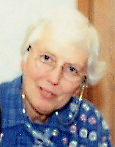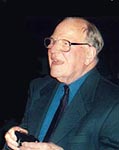
Home | Presentations | Archive catalogue | Search the archive | Order copies | Our story | 'The Way We Were' | Workshops | Links | Contact

Ambleside Oral History Group was born in 1976, just as mains electricity, television, second home ownership and the boom in leisure and tourism finally reached the remotest Lake District valleys.
The influence of these new phenomena soon infiltrated local life and rapidly dragged small Lakeland villages out of the virtual timewarp which geographical isolation had imposed on them through the first half of the 20th century. As new ways evolved, old ones died and with them went an economy which had once relied on sheep farming, milling, woodland industries, quarrying and domestic service for its prosperity.
In addition to this, the residents of central Lakeland also provided fertile ground for oral historians. The local population comprised a richly fascinating strata of old-established farming families, which had been expanded in the mid-19th century by the arrival of a new intelligentsia attracted initially by the Lake poets, followed subsequently by the newly rich from northern manufacturing families. Their extravagantly built Victorian and Edwardian mansions provided employment for both outdoor and indoor staff up until the 1930s and 1940s.
To record memories of a diverse world and its fast disappearing society, a small group of people including library staff and local Rotarians first met in 1976 at Ambleside Public Library and became founder members of Ambleside Oral History Group. With support from Cumbria County Libraries and financial help from a local charitable trust, the Group equipped itself with two £20 cassette recorders, a second-hand reel-to-reel Tandberg and a pile of cheap and unreliable 60 minute blank tapes. In time these were replaced by a new generation of portable recorders used with small external microphones.
 Under the inspiration and guidance of former Ambleside Librarian, Cynthia Thompson (left), who was also the Group’s founder member, the work began by asking the area’s oldest residents if they would be interviewed. The first respondent was a 99-year-old lady born in 1877, who had wonderful recall of her life as a child growing up in the 1880s and as a young parlour maid. Her interview was followed by over a dozen more, vividly describing country life in the 1890s and up to the first world war, after which many of the larger estates were broken up.
Under the inspiration and guidance of former Ambleside Librarian, Cynthia Thompson (left), who was also the Group’s founder member, the work began by asking the area’s oldest residents if they would be interviewed. The first respondent was a 99-year-old lady born in 1877, who had wonderful recall of her life as a child growing up in the 1880s and as a young parlour maid. Her interview was followed by over a dozen more, vividly describing country life in the 1890s and up to the first world war, after which many of the larger estates were broken up.
While our priority had to be interviewing those who could still tell us about this time, it caused a backlog of transcribing to build up which took several years to bring up to date.
Our collective experiences at interviewing were pooled to produce a simple training guide, to which all new recruits were introduced.
Interviews usually include such family details as date and place of birth as well as schooling and employment. This gives us some insight into the movement and size of families, child health, infant mortality and local employment, while putting each interview in context.
 As recordings and transcripts began to accumulate, it soon became apparent that their future use depended on easy access, the key to which would be efficient indexing, filing, storage and retrieval. This was achieved by our former secretary, Dr Sam Forrester (right), by introducing systems which transform each interview into a transcript with a frontsheet summary, available on screen or paper. Copies of sound CDs and transcripts are also provided for public use as well as safe storage in the County archives. Early interview transcripts were painstakingly hand-written or typed on archaic machines until the Group acquired its first word processor, printer and transcribing machine in 1984. Our earliest recordings were copied as they started to deteriorate and once the Group began to use PCs, all the transcripts were digitised and stored electronically. Archival paper is used for the printed version of each transcript.
As recordings and transcripts began to accumulate, it soon became apparent that their future use depended on easy access, the key to which would be efficient indexing, filing, storage and retrieval. This was achieved by our former secretary, Dr Sam Forrester (right), by introducing systems which transform each interview into a transcript with a frontsheet summary, available on screen or paper. Copies of sound CDs and transcripts are also provided for public use as well as safe storage in the County archives. Early interview transcripts were painstakingly hand-written or typed on archaic machines until the Group acquired its first word processor, printer and transcribing machine in 1984. Our earliest recordings were copied as they started to deteriorate and once the Group began to use PCs, all the transcripts were digitised and stored electronically. Archival paper is used for the printed version of each transcript.
Information technology has now been fully utilised, using text retrieval software, which makes the entire collection instantly searchable by indexed topics or keywords. This great advance means that a request for information which once involved hours of searching and photocopying transcripts can now be done in minutes, with results printed out instantaneously.
It took ten years of interviewing before the Group considered there was sufficient material to start to give something back to the community in the form of lectures or articles. One of the collection’s first uses in 1987 was to provide material for a series of weekly articles in the local newspaper, the Westmorland Gazette, entitled The Way We Were which ran for 18 months and grouped extracts into monthly themes. These helped raise the Group’s profile, and requests began to trickle in for lectures from schools, colleges, local history societies and Women's Institutes, and also from others interested in starting similar projects. A bank of presentations was created with subject matter ranging from ‘The Big House’, and ‘Women Talking’, to ‘The Lake District At War’ and ‘Industrial Accidents’. A schools’ kit on education produced with the local teacher training college entitled ‘Could Do Better’ proved a sell-out.
The collection has also provided useful material for authors, researchers and numerous student and school projects. Enquiries increased further with the publication of a brochure and since the Group launched itself on the internet with a website, email inquiries are worldwide.
Interviews have covered almost every aspect of life in the Lake District. Group members talked to huntsmen, gamekeepers and poachers, quarrymen and gunpowder workers, farm labourers, shepherds and blacksmiths, gardeners and parlour maids, bobbin mill workers and their bosses.
Tourism and leisure time increased through the 20th century, and so, too, did mountain accidents; so we talked to those who catered for visitors in hotels, guest houses and youth hostels and also to the climbers who founded the local mountain rescue team, the Langdale/Ambleside MRT.
Education is a recurring subject through childhood memories, and we also talked to a number of teachers whose schoolroom memories reached as far back as 1910. Other respondents told us about their jobs in nursing, undertaking, midwifery, shop-keeping, and as errand and telegram boys, telephonists, postmen, chauffeurs, charcoal burners, foresters, painters, decorators, shoe-menders and boot makers, plumbers, electricians, doctors, artists and sculptors. The collection also contains some remarkable accounts from servicemen and women from both world wars, some of whose interviews have become part of the national collection at the Imperial War Museum.
Recent consolidation of the collection involved a search to identify any ‘gaps’ in knowledge. This threw up a number of subject areas, including retailing, early tourism, wartime employment and evacuees.
Among our over 400 interviews, we have accounts of the building of the Thirlmere Aqueduct in 1889; life among the gentry in the big houses pre-1914; fighting at the front in the first world war; explosions and accidents in quarries and gunpowder works; the 1919 influenza epidemic; polio, scarlet fever and diptheria; the General Strike, a visit from the Prince of Wales in 1926, hardship in the depression years; floods, droughts and blizzards; and accounts of life on the battlefronts of the 2nd world war and at home, with special reference to the Home Guard, Short’s Sunderland Flying Boat Factory on Windermere and Grizedale Prisoner of War camp.
The Group now numbers 12, including one founder member, Jane Renouf, the current chair. The warmth of relationship which often grows between interviewer and respondent has always been one of the most rewarding aspects of being oral historians. The privileged access that respondents allow us to their lives is always acknowledged at the Group’s annual tea party. This enjoyable occasion is held each November to thank interviewees for their time and patience and to tell them about how the collection is being used.
The Group’s existence over the past quarter of a century has survived on minimal funding; its work has relied on regular subsistence grants from local trusts supplemented by payment from lectures and presentations.
However, in 2004 we embarked on a major task which was to transfer our audio tapes to CDs to avoid deterioration of the recordings and to take advantage of the convenience of the CD format. This project would have been beyond our means without substantial grant aid and we were able to obtain funding from various sources.
In 2005/6, work began to make our entire archive of transcripts searchable online. This has now been achieved and will be developed as time and resources permit. We believe we are the first oral history archive in the UK to offer this facility.
Also in 2006, we were pleased to become the repository for the archive of another Lake District oral history project, namely the LORTON and DERWENT FELLS LOCAL HISTORY SOCIETY. Their interviews concern the life and times of the village of Lorton with life stories and a focus on the effects of the 2001 Foot and Mouth disease outbreak on the community. Access to these interviews is available through the same search facilities.
Meanwhile the list of respondents waiting to be interviewed never seems to decrease. The Group’s most recent interviews take us up to the 1980s, so that Ambleside’s collection now spans a century, but is there a future for oral history in an age dominated by the camcorder and obsessed with information technology? Ask us in another 25 years!